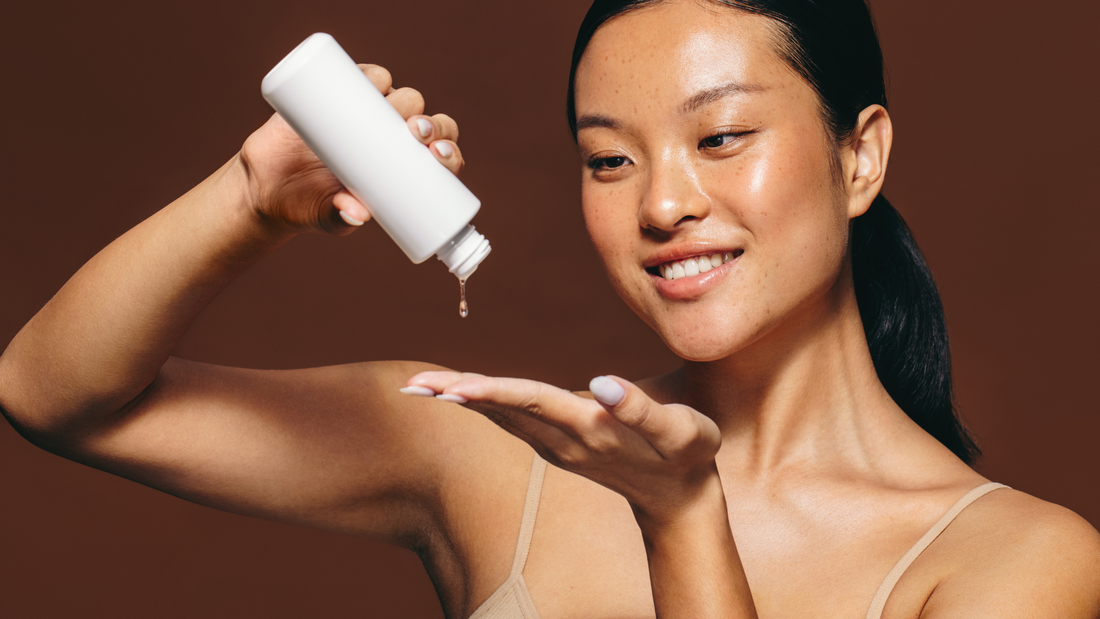In the world of beauty and self-care, skincare has emerged as a vital aspect of our daily routines. With countless products and trends flooding the market, it can be overwhelming to navigate the best approach for your unique skin type and concerns. A personalized skincare routine is not just a luxury; it’s a necessity for achieving healthy, radiant skin. In this comprehensive guide, we will walk you through the steps to create a skincare routine tailored specifically to your needs.
Understanding Your Skin:
Before diving into product selection, it’s essential to understand your skin. Skin types can generally be categorized into five main categories:
-
Normal: Balanced skin that is neither too oily nor too dry. It has a smooth texture and few imperfections.
-
Oily: Characterized by excess sebum production, leading to a shiny appearance and enlarged pores. Oily skin is prone to acne and breakouts.
-
Dry: Lacks moisture and can feel tight, rough, or flaky. Dry skin may also show signs of redness or irritation.
-
Combination: A mix of oily and dry areas, typically with an oily T-zone (forehead, nose, chin) and dry cheeks.
-
Sensitive: Prone to irritation, redness, and reactions to products. Sensitive skin requires gentle, soothing ingredients.
Step 1: Identify Your Skin Type
To build an effective skincare routine, start by identifying your skin type. Here are some simple methods to determine your skin type:
-
The Bare-Faced Test: Cleanse your face with a gentle cleanser and leave it bare for an hour. Observe how your skin feels. If it feels tight and dry, you likely have dry skin. If it becomes shiny, you may have oily skin. If it feels comfortable, you may have normal or combination skin.
-
The Blotting Sheet Test: After cleansing, press a blotting sheet on different areas of your face. If the sheet picks up oil from the forehead and nose but not from the cheeks, you likely have combination skin. If it absorbs oil from all areas, you have oily skin. If it picks up little to no oil, you may have dry or normal skin.
-
The Water Test: After cleansing, wait for about 30 minutes. If your skin feels tight or looks flaky, it’s likely dry. If it looks shiny, it’s oily. If it feels comfortable, you may have normal or combination skin.
Step 2: Assess Your Skin Concerns
Once you’ve identified your skin type, the next step is to assess any specific concerns you may have. Common skin concerns include:
-
Acne and Breakouts: Often associated with oily skin, but can affect any skin type. Look for products that contain salicylic acid, benzoyl peroxide, or tea tree oil
-
Hyperpigmentation: Dark spots or uneven skin tone caused by sun exposure, hormonal changes, or acne scars. Ingredients like vitamin C, niacinamide, and alpha arbutin can help brighten and even out skin tone.
-
Fine Lines and Wrinkles: Signs of aging that can affect all skin types. Retinoids, peptides, and antioxidants are effective in reducing the appearance of fine lines
-
Dryness and Dehydration: Can occur in dry skin or as a result of environmental factors. Look for hydrating ingredients like hyaluronic acid, glycerin, and squalane.
-
Redness and Sensitivity: Common in sensitive skin types or conditions like rosacea. Soothing ingredients such as aloe vera, chamomile, and calendula can help calm irritation.
Step 3: Research Ingredients
Understanding the ingredients in skincare products is crucial for building a personalized routine. Here’s a breakdown of some key ingredients to look for based on your skin type and concerns:
-
For Oily Skin:
-
Salicylic Acid: A beta hydroxy acid (BHA) that penetrates pores to help clear acne and reduce oiliness. It’s effective for preventing breakouts and minimizing the appearance of pores.
-
Niacinamide: Helps regulate oil production and minimizes the appearance of pores. It also has anti-inflammatory properties, making it suitable for acne-prone skin.
-
Clay: Absorbs excess oil and impurities, making it a great ingredient for masks aimed at oily skin.
-
For Dry Skin:
-
Hyaluronic Acid: A powerful humectant that attracts moisture to the skin, helping to keep it hydrated and plump.
-
Glycerin: Another humectant that helps retain moisture and improve skin texture.
-
Ceramides: Help restore the skin barrier and lock in moisture, making them essential for dry skin types.
-
For Combination Skin:
-
Lightweight Moisturizers: Gel-based formulas that hydrate without feeling heavy. Look for non-comedogenic options that won’t clog pores.
-
Exfoliating Acids: AHA (alpha hydroxy acid) for dry areas and BHA for oily areas and BHA for oily areas can help balance the skin
-
For Sensitive Skin:
-
Aloe Vera: Known for its soothing and hydrating properties, making it ideal for calming irritated skin.
-
Chamomile: Has anti-inflammatory properties that can help reduce redness and irritation.
-
Fragrance-Free Products: To minimize irritation, always opt for products labeled as fragrance-free.
-
For Anti-Aging:
-
Retinoids: Promote cell turnover and reduce the appearance of fine lines and wrinkles. Start with a lower concentration to allow your skin to adjust.
-
Vitamin C: An antioxidant that brightens skin and helps with hyperpigmentation while protecting against environmental damage.
-
Peptides: Support collagen production and improve skin elasticity making them beneficial for mature skin.
Step 4: Create Your Skincare Routine
Now that you understand your skin type, concerns, and key ingredients, it’s time to create your personalized skincare routine. A basic routine typically consists of the following steps:
-
Cleansing: Start with a gentle cleanser to remove dirt, oil, and makeup. Choose a cleanser that suits your skin type. For oily skin, a foaming or gel cleanser may work best, while cream or oil-based cleansers are ideal for dry skin.
-
Toning: After cleansing, apply a toner to help balance your skin’s pH and prepare it for the next steps. Look for alcohol-free toners with hydrating or soothing ingredients. Toners can also help remove any residual impurities left after cleansing.
-
Serum: Incorporate a serum that targets your specific skin concerns. For example, if you’re dealing with acne, a serum with salicylic acid or niacinamide can be beneficial. For dryness, opt for a hyaluronic acid serum.
-
Moisturizing: Regardless of your skin type, moisturizing is essential. Choose a moisturizer that provides adequate hydration without clogging pores. Lightweight gels work well for oily skin, while richer creams are better for dry skin.
-
Sunscreen: In the morning, always finish your routine with a broad-spectrum sunscreen with at least SPF 30. This step is crucial for protecting your skin from UV damage and preventing premature aging. Reapply every two hours if you’re outdoors.
Step 5: Adjust and Adapt
Your skin can change due to various factors such as weather, diet, stress, and hormonal fluctuations. It’s important to regularly assess your skin and adjust your routine accordingly. If you notice new concerns or changes in your skin’s behavior, don’t hesitate to switch up your products or consult a dermatologist for professional advice. Seasonal changes may require different formulations; for instance, you might need a heavier moisturizer in winter and a lighter one in summer.
Step 6: Patch Testing
Before introducing new products into your routine, always perform a patch test to avoid adverse reactions. Apply a small amount of the product on a discreet area of your skin, such as behind your ear or on your wrist, and wait 24 hours to see if any irritation occurs. This step is particularly important for sensitive skin types or when trying potent active ingredients.
Step 7: Consistency is Key
Building a personalized skincare routine is not a one-time task; it requires consistency and patience. Stick to your routine for at least a few weeks to see noticeable results. Remember that skincare is a journey, and it may take time to find the perfect combination of products for your skin. Documenting your routine and any changes in your skin can help you track what works best.
Step 8: Incorporate Exfoliation
Exfoliation is a crucial step that should not be overlooked. It helps remove dead skin cells, promoting cell turnover and revealing fresher skin underneath. Depending on your skin type, you can choose between physical exfoliants (scrubs) and chemical exfoliants (acids like AHAs and BHAs). For oily skin, chemical exfoliants can be particularly effective, while dry skin types may benefit from gentle physical exfoliation. Aim to exfoliate 1-3 times a week, depending on your skin's tolerance.
Step 9: Nighttime Routine
Your nighttime skincare routine can differ from your daytime routine, as your skin undergoes repair and regeneration while you sleep. Consider incorporating more potent treatments at night, such as retinoids or heavier moisturizers. This is also a great time to use overnight masks or treatments that target specific concerns, such as acne or dryness.
Step 10: Lifestyle Factors
Remember that skincare is not just about the products you use; lifestyle factors play a significant role in your skin's health. Ensure you are drinking enough water, eating a balanced diet rich in antioxidants, and getting adequate sleep. Stress management techniques, such as yoga or meditation, can also positively impact your skin
Conclusion:
Creating a personalized skincare routine is an empowering process that allows you to take control of your skin’s health. By understanding your skin type, assessing your concerns, researching ingredients, and following a structured routine, you can achieve the glowing, healthy skin you desire. Remember to be patient and flexible, as your skin’s needs may change over time. With dedication and the right products, you’ll be well on your way to mastering your skincare routine.

